Affiliate links on Android Authority may earn us a commission. Learn more.
Hands-on with the Nokia 8
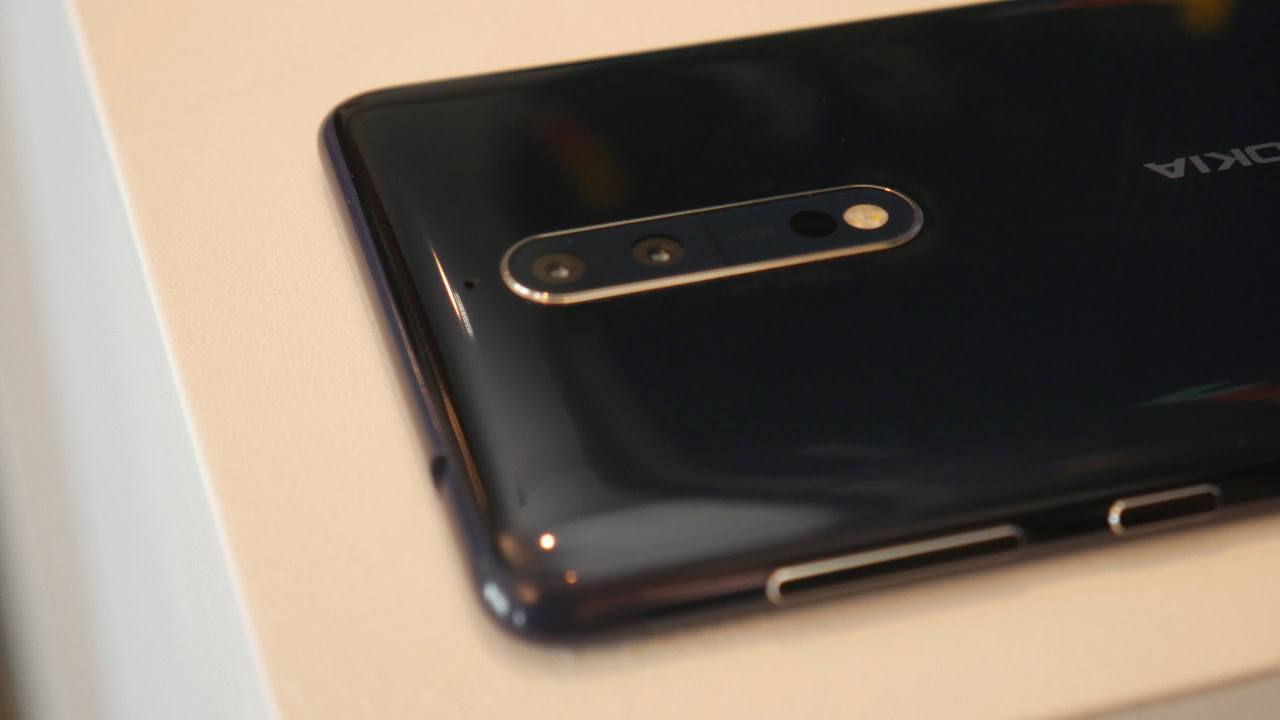
HMD Global has just unveiled what will be the very first Nokia flagship running Android: the Nokia 8. Historical significance aside, does the Nokia 8 represent the return to form that legions of Nokia fans have been waiting for? Well, it certainly looks and feels a whole lot like a 2017 flagship and like many flagships, it has a killer feature to set itself apart. Let’s dive right in.
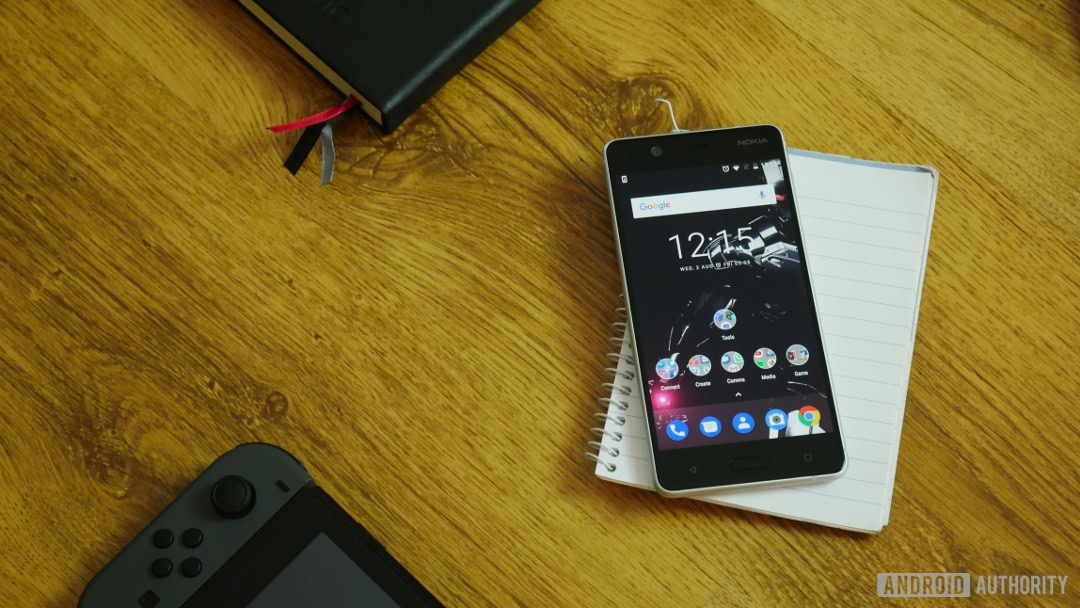
As Nokia has been known to do in the past, they’re putting the major emphasis on the camera – or should I say cameras – and the addition of some unique tricks should make it a great choice for content creators and the Instagram generation. HMD themselves have described the Nokia 8 as the ‘ultimate device for documenting your life’, which will certainly appeal to a specific audience.
But will that be enough to compete with existing heavy hitters?
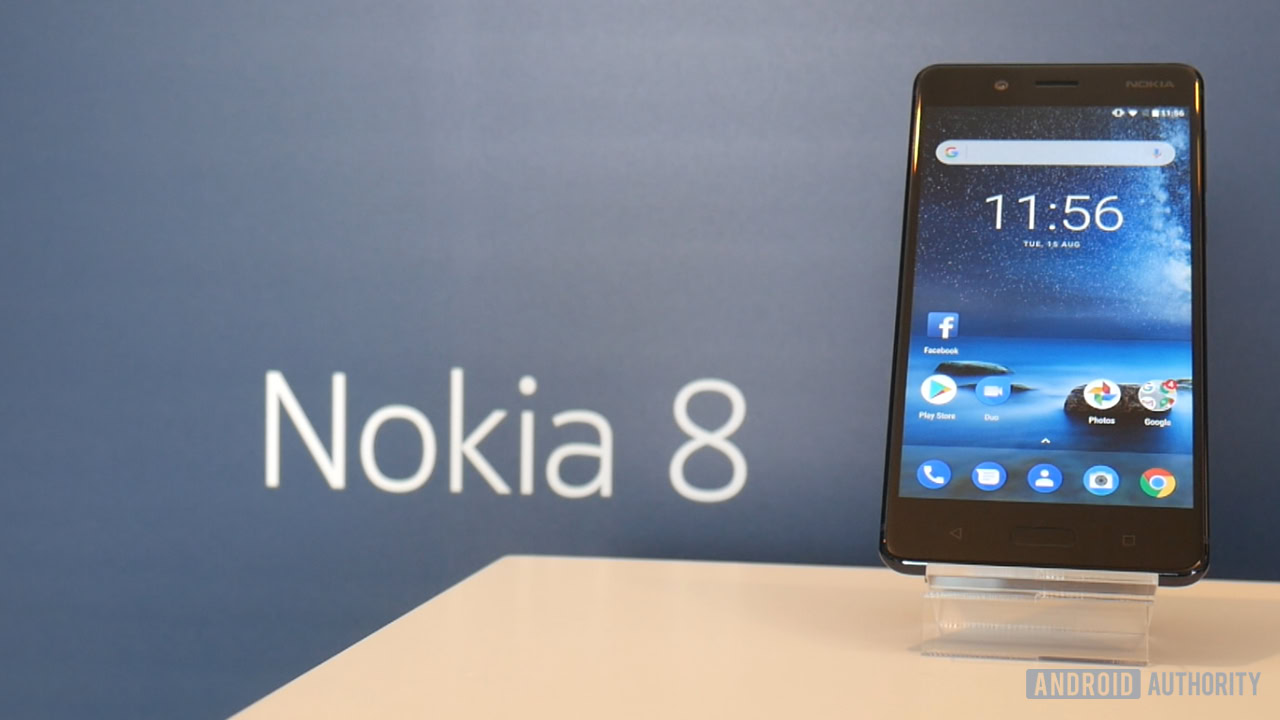
Design and history
For those not in the know, HMD Global is a Finnish company that acquired the Nokia brand license just eight months ago and has already given us the Nokia 3, 5 and 6. This is their first stab at a real flagship though, and having just reviewed the Nokia 5, I was eager to see how a high end model would hold up and whether HMD would be able to fly the flag proudly for the Nokia brand (no pun intended!).
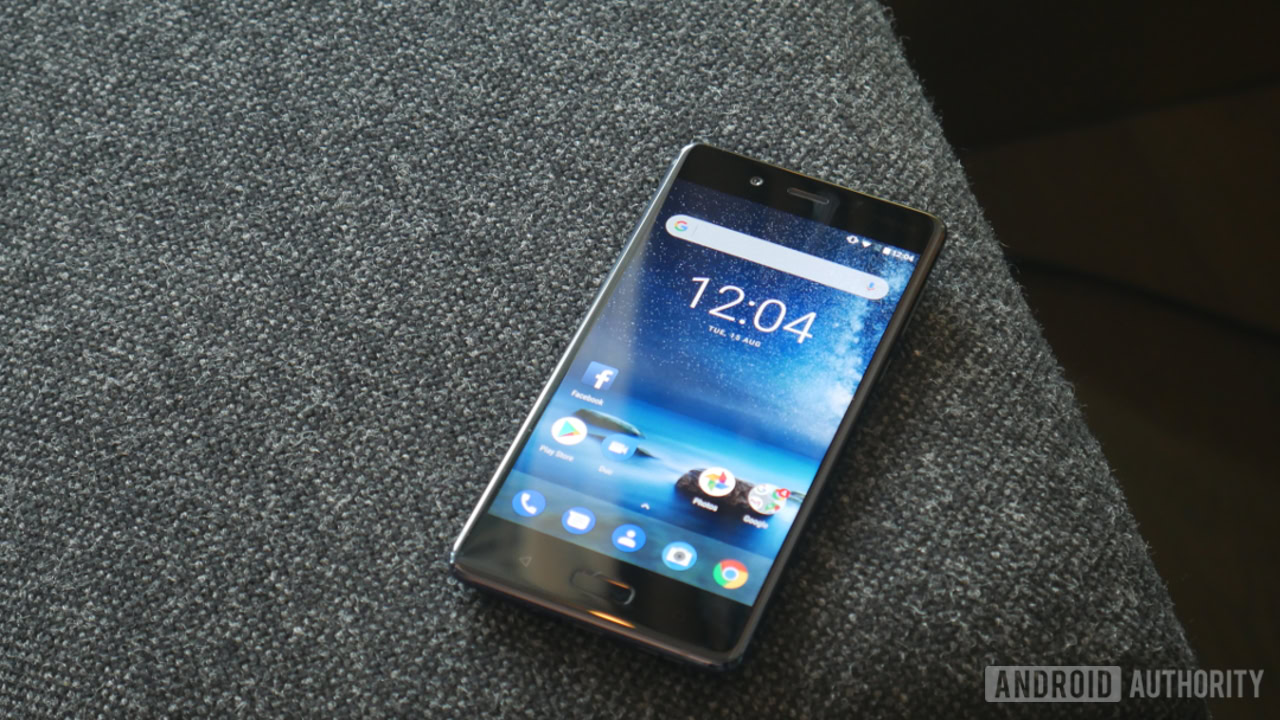
To look at, the Nokia 8 is off to a good start. The Nokia 8 has most of the hallmarks of a modern flagship, while continuing the design language of the last three models. It has an attractive and very slim all-aluminum design with an average thickness of 7.3mm. It’s 4.6mm at its thinnest point and 7.9mm at its thickest.
The design supposedly curves like this in order to pack maximum performance into a sleek body and HMD says you ‘won’t find a straight line’ in the design. The Nokia 8 comes in matte silver, matte blue, polished blue and an eye-grabbing polished copper, colors which adorn the back of the device but not the front.
On the front is a 5.3-inch QHD 2,560 x 1,440 IPS LCD display with 700 nits of brightness. It certainly looked very vibrant, bright and crisp in my brief testing period (admittedly only indoors). There’s also a fingerprint sensor around the front on an indented home button – which is my personally preferred placement, but your mileage may vary.
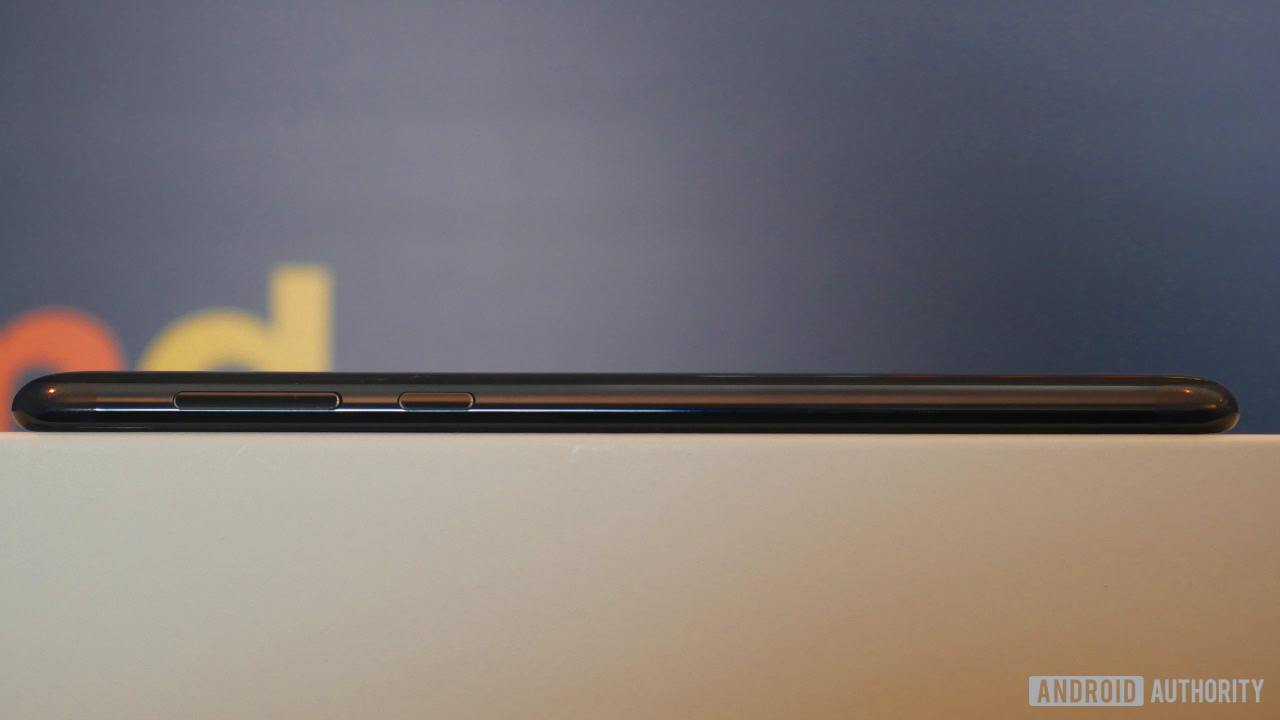
While rather stunning from the rear, the Nokia 8 is also something of a fingerprint magnet and is very slippery. Those bezels are also starting to look a little bit like last year compared to some other top-of-the-range phones now available.
The Nokia 8 is also not waterproof but rather only splash-proof with an IP54 rating. That’s something that some users have come to expect from flagships (much like bezel-less displays) so this might be a blow for some. While the Nokia 8 is a great looking phone, it’s not Galaxy S8 great…
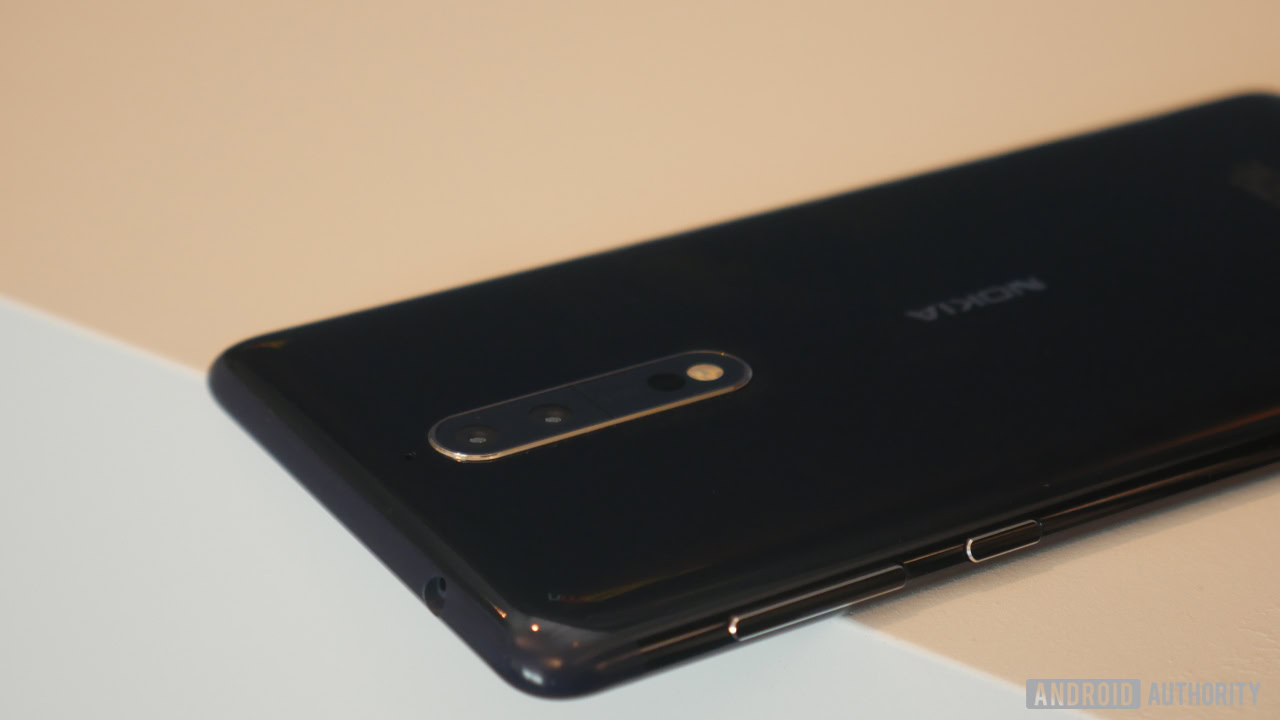
Performance and software
| Display | 5.3-inch IPS LCD display 2560 x 1440 resolution 554 ppi 700 nts of brightness Corning Glass 5, 2.5D glass |
|---|---|
Processor | Snapdragon 835 MSM8998 (4* 2.45 GHz Qualcomm Kryo + 4* 1.8 GHz Kryo) |
GPU | Adreno 540 |
RAM | 4 GB RAM |
Storage | 64 GB microSD support up to 256 GB |
Cameras | Rear camera: 13 MP (Color + OIS) + 13 MP (Mono) with ZEISS optics, 1.12 μm, f/2.0 aperture, 76.9-degree view, PDAF, IR range finder, dual-tone flash Front camera: 13MP PDAF, 1.12 μm, f/2.0 aperture, 78.4-degree view, display flash |
Network | Networks: GSM: 850/900/1800/1900 WCDMA: 1, 2, 5, 8 TDS-CDMA: 34, 39 LTE:1, 2, 3, 4, 5, 7, 8, 20, 28, 38, 39, 40, 41 Network speed: LTE Cat. 9, 3CA, 450Mbps DL/50Mbps UL |
Connectivity | USB Type-C USB3.1 Gen 1 (5 Gbps) 3.5 mm headphone jack Ambient light sensor, Proximity sensor, Accelerometer, E-compass, Gyroscope, Fingerprint Sensor, Hall sensor, Barometer 802.11 a/b/g/n/ac (MIMO) Bluetooth 5.0 GPS/AGPS+GLONASS+BDS NFC ANT+ |
Water resistance | No, but splash-proof rating of IP54 |
Extra features | Dual or single SIM, front-mounted fingerprint scanner |
Battery | 3,090 mAh battery Non-removable Quick Charge 3.0 |
Software | Android 7.1.1 Nougat, Android O 'coming soon' |
Colors | Polished Blue, Polished Copper, Tempered Blue, and Steel |
Dimensions and weight | 151.5 x 73.7 x 7.9 mm 160 g |
Specs-wise, the Nokia 8 puts up a good showing and is able to trade blows with other flagships. It’s powered by a 2.45 GHz Qualcomm Snapdragon 835 and is backed up by 4 GB of RAM. This duo should make it more than capable of handling even the most demanding tasks.
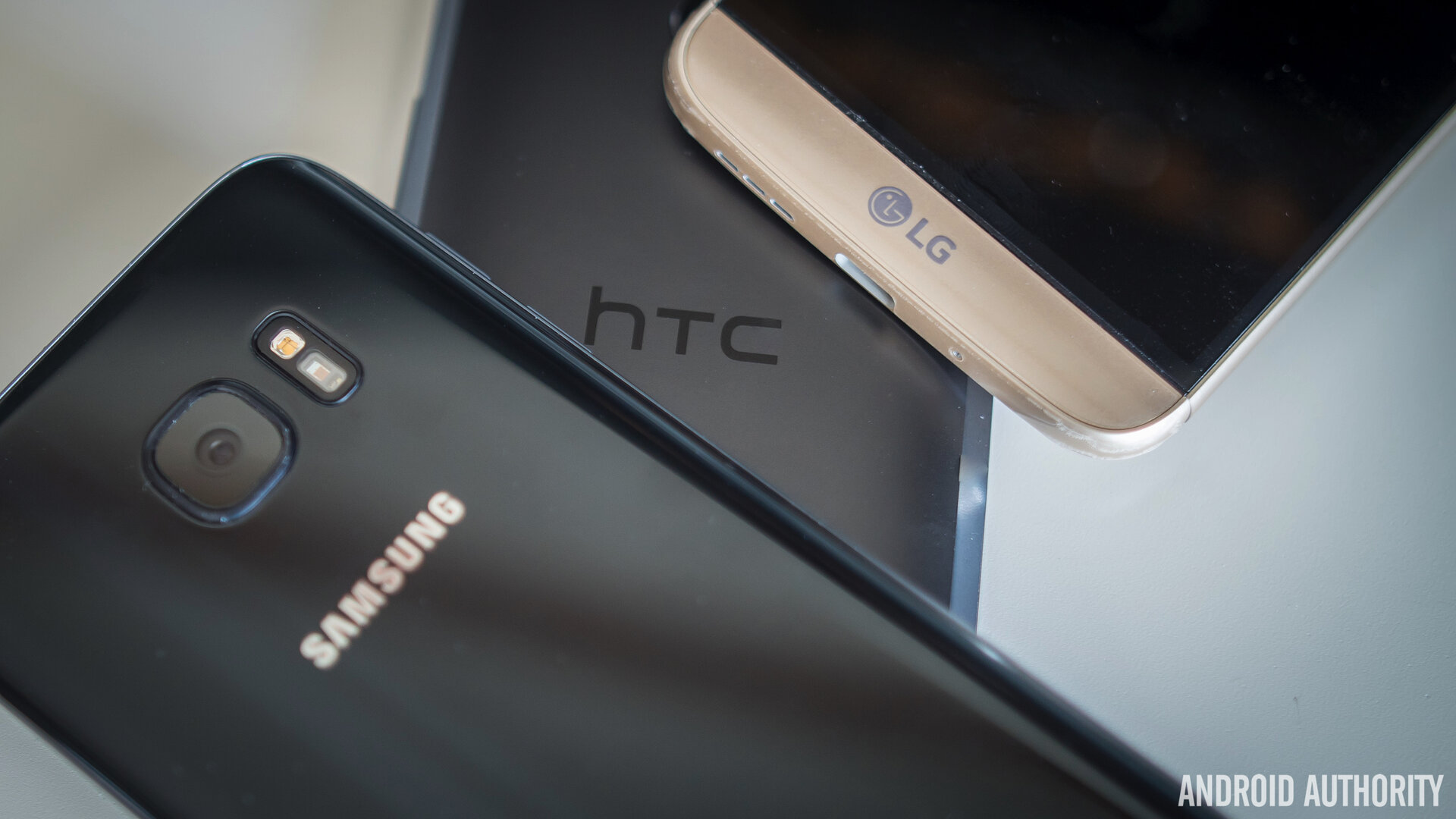
What might also help out here is some advanced cooling that makes use of a copper pipe and graphite shielding in order to disperse heat evenly across the phone. That means there should be no ‘hot spot’ under stress which will reportedly allow you to push the performance harder for longer.
Another thoughtful design choice was placing the antennae at the top and bottom of the phone, which should prevent them from getting covered by your hand while you use it. This should also allow for some of the best signal sensitivity in the industry and potentially better battery life. We’ll have to get back to you on this in the full review though.
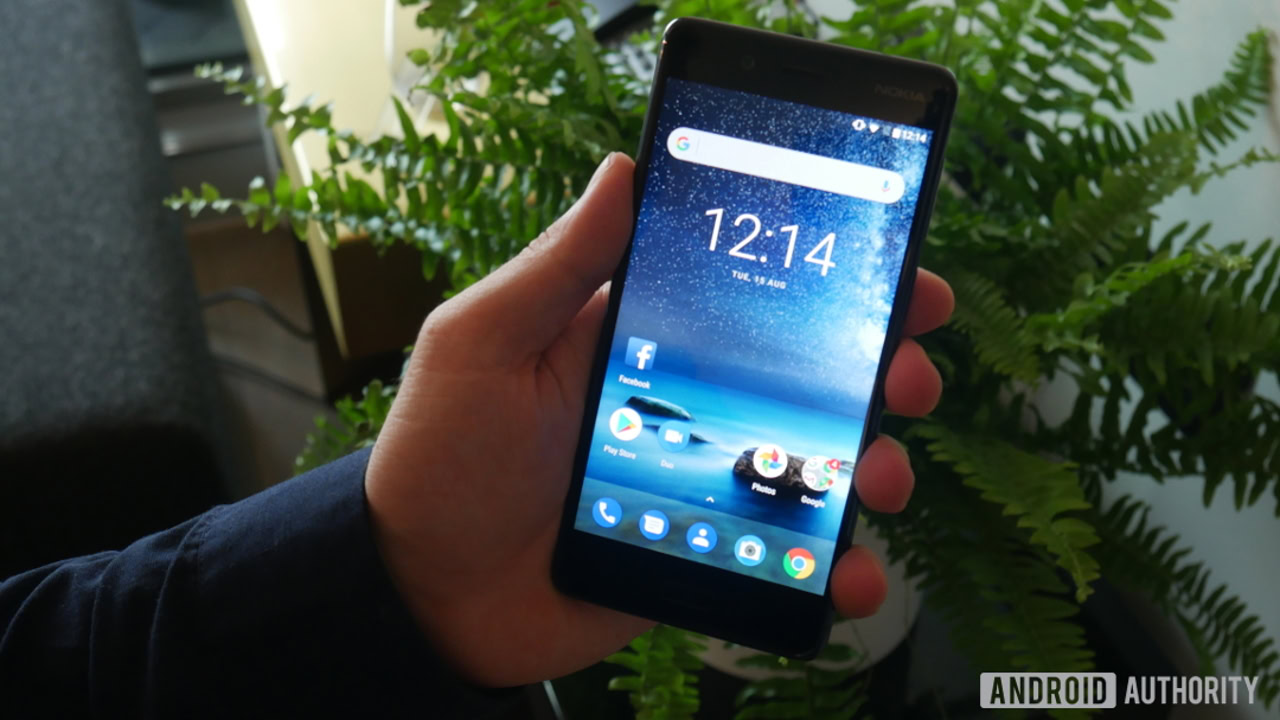
The Nokia 8 comes with 64 GB of internal storage. There will be both a single SIM and a dual SIM version, with the second SIM tray accepting an SD card to expand storage by up to 256 GB. The battery is a 3,090 mAh cell with Quick Charge 3.0 via USB Type-C, but better signal sensitivity and a stripped-down Android experience means this should last you a decent amount of time.
You can expect an entirely clean Android experience from the Nokia 8 and Nokia promises owning one will be one of the fastest ways to get Android O.
Which brings us to software. You can expect an entirely clean Android experience (Android 7.1.1 out of the box) with no additional customization or bloatware. Everything from the dialer and keyboard to the contacts uses Google’s Mobile Services and HMD explains that it wouldn’t have been adding anything by making changes ‘just to be different’.
The stock Android experience also means that the device will receive quicker updates; Nokia promises that owning the Nokia 8 will be one of the fastest ways to get Android O in your hands. Reportedly, the new OS is already being tested on the handset. Personally, I quite like to see customizations from OEMs to add a little unique flavour to the experience, but I know I’m largely in the minority there.
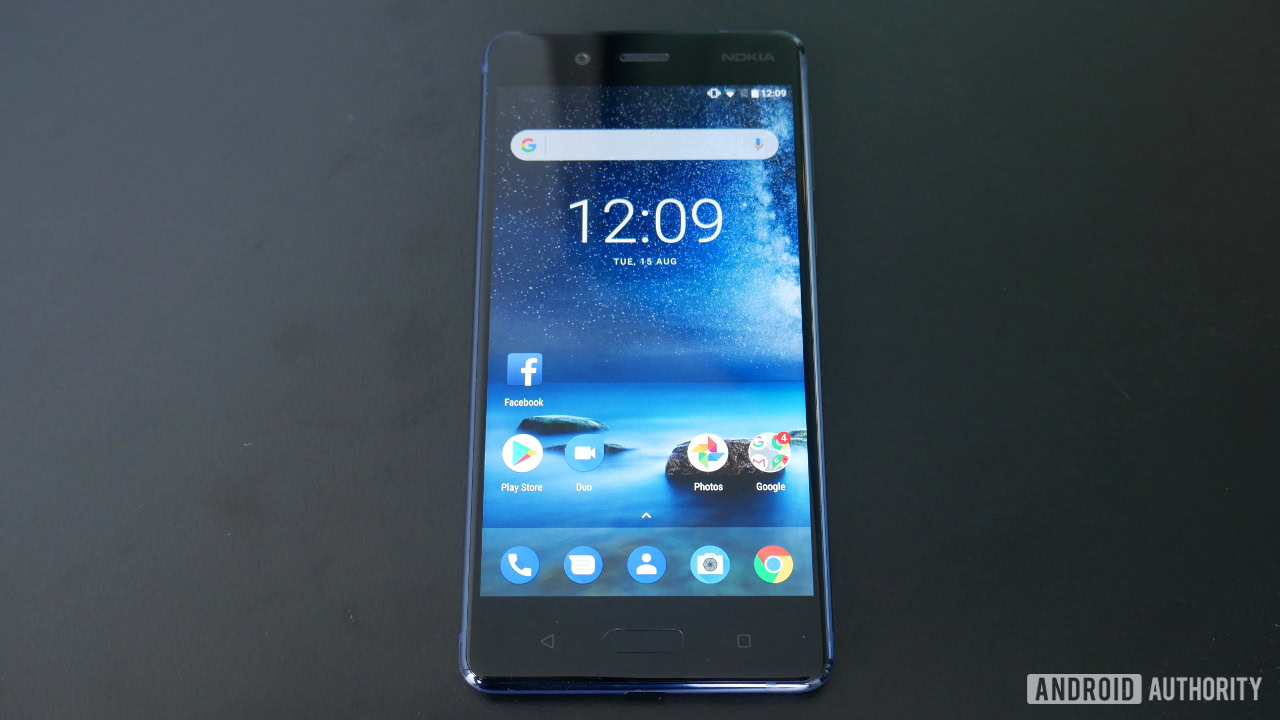
The camera and ‘bothie’ mode
Saving the best for last, the star of the show here is the camera. The Nokia 8 camera is the result of a partnership between HMD and ZEISS and is the core experience the phone is designed around.
The rear shooter utilizes two sensors: one color and one monochrome. The two images are then combined into a single shot with greater contrast using ‘Image Fusion Technology’. This is essentially what we have seen from several other handsets recently, such as the HONOR 9 and HUAWEI P10. There’s also a two-tone flash and both apertures are f/2.0.
Related: Who is Carl ZEISS?
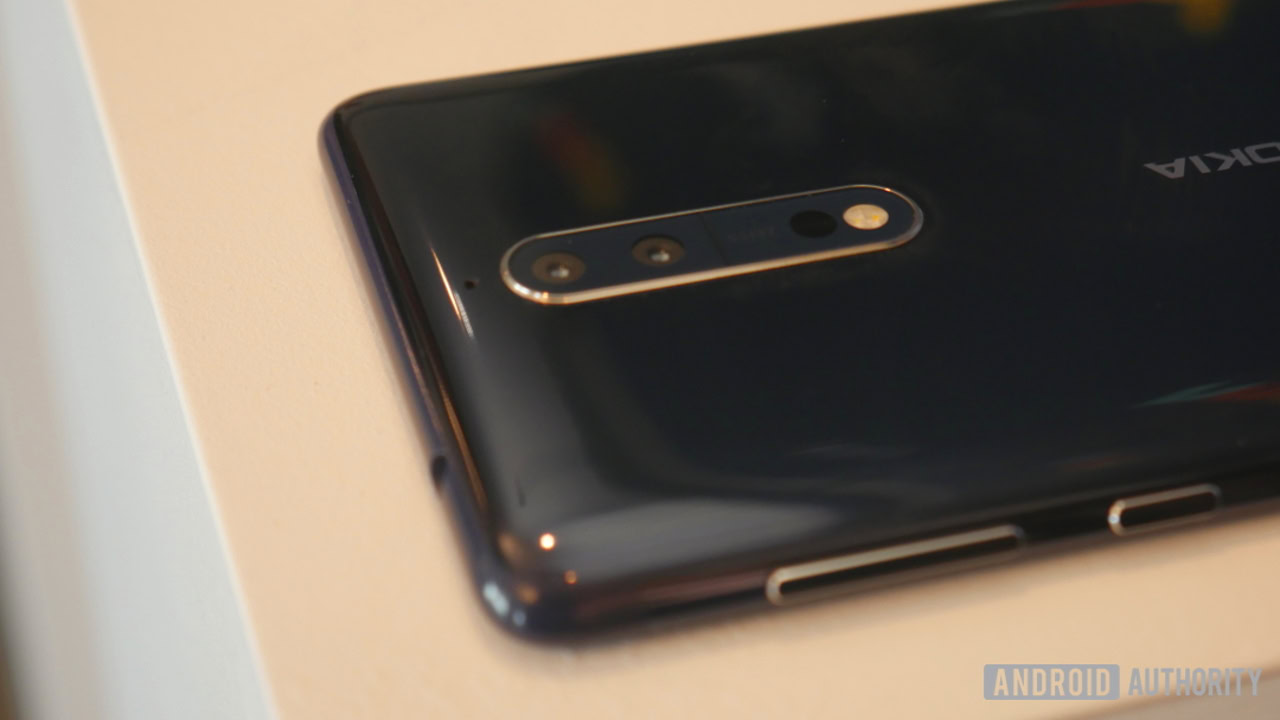
Both rear sensors are 13 MP, but in a unique twist, so too is the front-facing camera which, in fact, utilizes the exact same camera module. That means you also get auto focus, which is another rare feature for a selfie-camera (though it was something we also saw in the S8, slightly dodgy though the implementation there was). The reasoning behind this is to support what the company sees as the Nokia 8’s ‘killer feature’: the ‘bothie’.
Both rear sensors are 13 MP, but in a unique twist, so too is the front-facing camera, which also has auto focus.
Nokia wants this phone to be the ‘ultimate device for telling your story’. Thus, it’s bothie feature allows users to snap photos or record video using footage from both the front and rear cameras, split down the middle 50/50.
This ‘bothie’ mode is intended to allow users to ‘tell the whole story’. Whether shooting in this mode or just recording regular video, both can be streamed directly to Facebook Live or YouTube natively from the camera app. I found the Nokia 8 camera to be a good shooter capable of some detailed, contrasty shots, but I was unable to get the photos off the device, so we’ll need more time to test before we can make a final verdict.
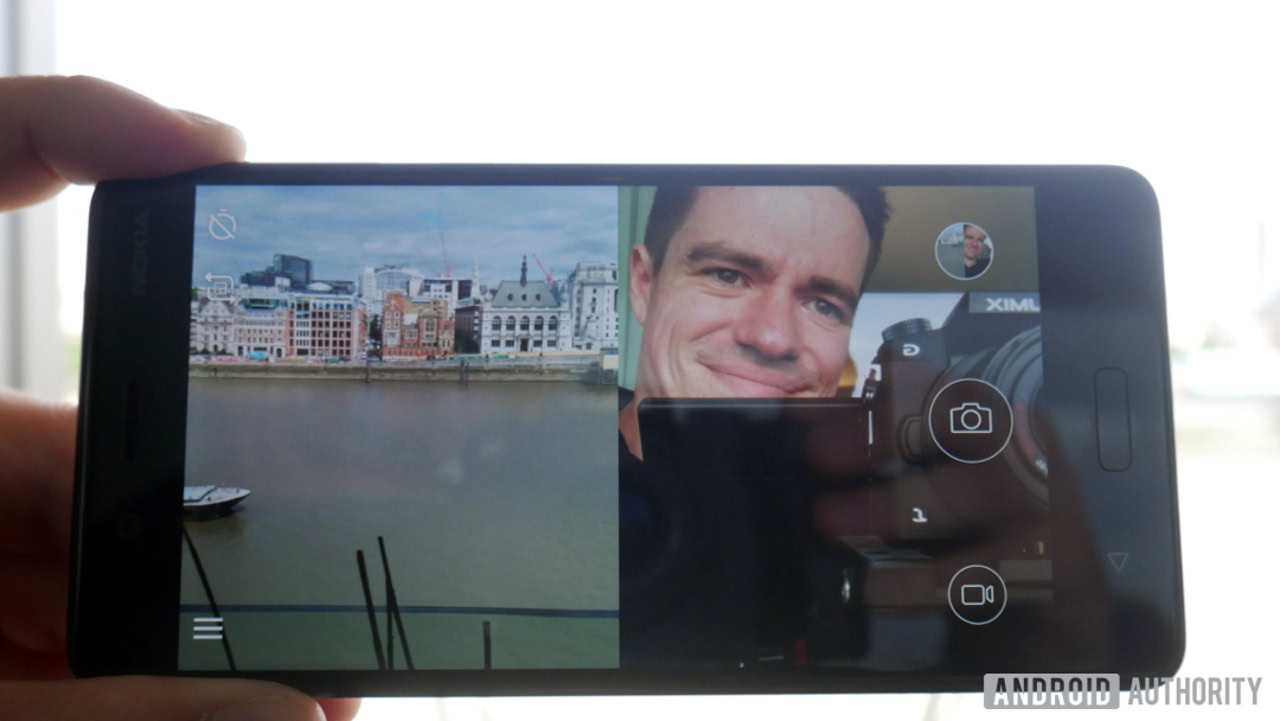
I was a little disappointed not to see more features in the camera app (which was developed in-house) and particularly at the lack of manual settings. Though perhaps you’ll be able to tweak these with a third party solution, as with the Google Pixel.
The Nokia 8 is the first time we've seen Ozo Audio on a mobile device, which is usually reserved for Hollywood VR cameras.
What also makes the Nokia 8 a good choice for content creators is top-tier audio recording, with the phone using Ozo Audio. This is an audio solution found in VR cameras previously only used by Hollywood and is the first time we’ve seen it on a mobile device.
Using multiple microphones, it can capture a high dynamic range and record binaural audio. This means that someone watching your Facebook livestream with headphones will be able to hear stereo sound with no need to own specific software themselves. In theory, the audio quality should be able to match the video when capturing your story on the move and if you’re someone who enjoys live streaming, this will be a big boon.
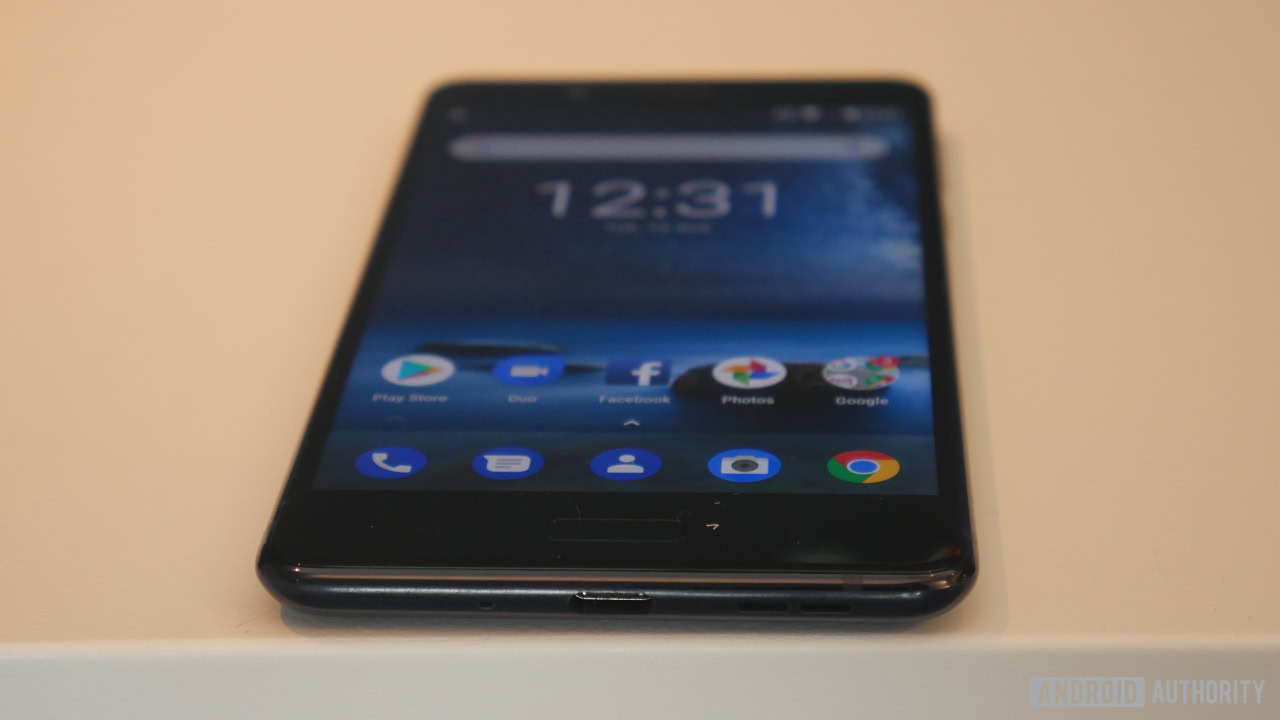
Summing up
For a killer feature, I’m not sure that the bothie mode is really anything that couldn’t be accomplished on any other device with the right app (*cough* gimmick *cough*), but having the feature so readily available means that more users will be likely to try it and it is a good way to showcase what the phone is really all about.
Whether bothie video becomes something content creators will adopt into their videos will remain to be seen. I personally don’t see how having my gurning mug take up half the screen is going to add value to my videos… but your mileage may vary there.
More to the point though, a 13 MP front-facing camera with auto focus is a compelling feature and one that will no doubt appeal to vloggers, backpackers or anyone else who enjoys turning the camera on themselves. And when you couple that with the sleek design, the ‘pure’ Android experience and the top of the range specs, I’m sure there will be a large audience for the phone.
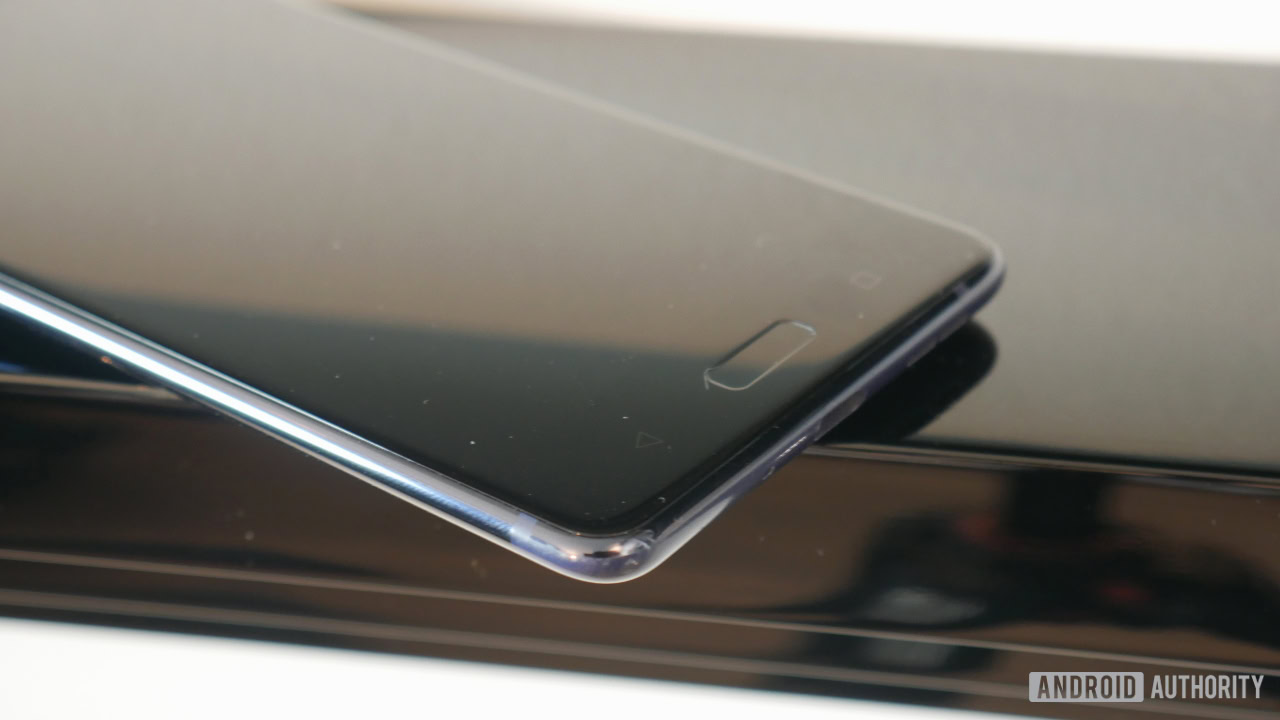
The Nokia 8 will be available globally on September 6 for a price of 599 EUR (details on US pricing to come). We’ll have the full review ready for you then, so we can find out if this is a truly competitive flagship from Nokia and whether the Nokia 8 really is the ultimate phone to document your life with.